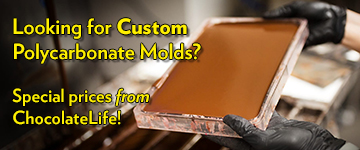I pan coffee beans and other centers. I have always used untempered chocolate which has been successful. It is my understanding that the vibration of panning makes type V crystals thus tempering the chocolate.
However in a recent competition my product was marked down as the judges said that the chocolate was gritty and took too long to melt on the tongue. Of course I was horrified! The suspect was the micron size of the solids and the cocoa butter content but on careful checking both are seemingly excellent.
I was VERY fortunate to be able to communicate with two of the judges and one, who is very respected (they both are) insists that I should have used tempered chocolate.
This baffled me but I took his advice and today did a batch with tempered chocolate. To put it mildly it was a mess. The chocolate became far too thick resulting in lots of "doubles" and was very hard work. And I can't really detect that it's any better.
I am looking at other possibilities but can anyone tell me whether I really should use tempered chocolate? One expert says "yes". Two others and an article I have to hand says "untempered". Common sense says that it's simply too hard to use tempered chocolate when panning.
Does anyone have advice please? DOES the panning process produce type V crystals? So can I use untempered chocolate?
My panning environment is usually around 45-50%RH and temperature 17C (62F) in the room with a bit lower in the pan (as best I can get). I use dark (70%), milk (36%) and white chocolate.
I really thought I had this nailed down but I MUST listen to what these guys say - but it just seems wrong.
Any thoughts please?
Thanks a million
Colin 
updated by @colin-green: 04/11/25 09:27:36


